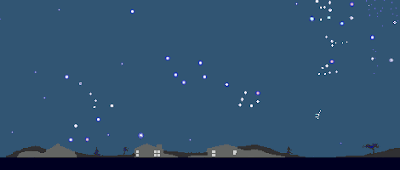

When is a poem not a poem
And verse runs into prose?
When is a home not a home
And strife contemptuous grows?
The Differential Calculus
Defines the least derivative
Of increments too small for us
In subtle terms definitive,
But the myriad seeds of change that fall
By each gradation's measure
Differentiate the large from tall,
The enjoyment from the pleasure;
If this sonnet is not proved true,
I've never judged, nor yet have you.
Kim Cofino is a twenty-first century literacy specialist at the International School Bangkok in Thailand. In her post What Is Literacy, she speaks of attempts to understand the “shift in literacy, especially considering that many people still believe that literacy is solely being able to read and write in printed form.”
She cites the Becta reports and the McArthur Report as concrete research-based examples “that would help people outside the educational technology field better understand this shift.” She also asks for our thoughts on the concept of literacy.
I put a comment against her post:
We go round in circles with this today - but one could say, 'twas ever thus.
When I was taught (English) literacy in the 60s, we had a teacher who honestly believed that if a word was not to be found in the dictionary, it didn't exist. Many English teachers (of the old school) believed this.
I was not very well educated in those days (that's why I was at school) but even I could figure that the words in the dictionary weren't always like that - we were taught this in the English class! Shakespeare, for instance, used a strange diction and some strange words. My question was, 'whatever happened to those?'
Today we have all sorts of problems with examination authorities who eschew mobile text language, especially in English examinations. And I wonder.
Recently I re-read The Mother Tongue by Bill Bryson and was again delighted to find reference to a book that I'd read, 40 years ago, by Simeon Potter, Our Language (first published in 1950).
In both books the message was clear: language, and the ways that it is communicated, are living things. They react sometimes slowly, sometimes rapidly, like swarms of bees, always on the move.
Literacy clearly has an association with symbolism. I think it is a far cry to say that literacy is only to do with the power of speech or the skills associated with that. Yet, without speech, the symbolism of 'literature', whether it is Shakespeare's script, or a text message using the symbols of that medium, would have no relevance.
Sign language, no less a language than any other, also has its base in symbolism - involving signs and actions. But it is really more like the spoken language, for it is not designed to represent the written words and often simply does not follow those.
Literacy is bound to the spoken language AND the written symbolisms that represent the language. A person who is incapable of writing, because of some physical disability, is no less literate than someone who is not disabled but who does not know how to write. But you would agree that there may be a difference. For instance, the able person who does not know how to write may not be able to read either. Not necessarily the person with the disability who cannot write.
So literacy can have many facets. We need to define these more explicitly. I gather that the visions we may have of these definitions change as much as language does.
It eventually comes down to opinion, either that of the individual or of the authorities. And to have any acceptable measure of literacy, by whatever means it is metered, requires standards.
Unfortunately, this is where it becomes set in a way that doesn't really fit the nature of language. So standards must be continually revised to meet the needs of society and its understanding of literacy.
Which brings us back to the question. My gut feeling is that we are chasing a moving spot of light. As quickly as we have defined where it is and mapped its shape, it has moved on.
The Moving Finger writes; and, having writ,
Moves on: nor all your Piety nor Wit
Shall lure it back to cancel half a Line,
Nor all your Tears wash out a Word of it.
from Edward Fitzgerald's 'Rubaiyat of Omar Khayyam'.















































